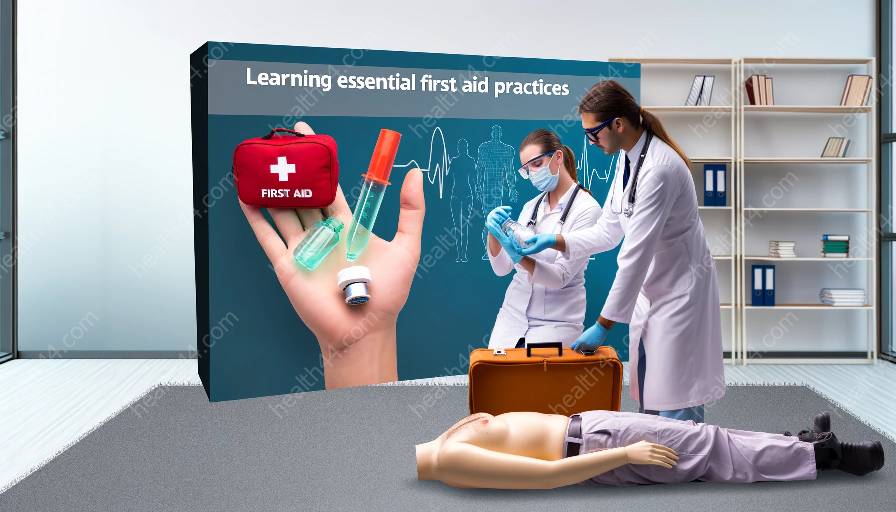Heart attacks and strokes are serious medical emergencies that demand immediate attention. In the context of first aid, health education, and medical training, understanding the recognition and appropriate response to these conditions can make a significant difference in saving lives.
This topic cluster will explore the recognition and response to heart attacks and strokes, providing comprehensive information vital for both professionals and laypeople.
Understanding Heart Attacks
A heart attack, also known as a myocardial infarction, occurs when a part of the heart muscle doesn’t receive enough blood flow. This can happen when a coronary artery becomes blocked, altering or completely stopping the blood supply to the heart muscle. Recognizing the signs and symptoms of a heart attack is crucial for timely intervention.
Signs and Symptoms of a Heart Attack
The common signs and symptoms of a heart attack include:
- Chest pain or discomfort: This may feel like pressure, squeezing, fullness, or pain in the center or left side of the chest that lasts for several minutes or comes and goes.
- Upper body discomfort: Pain or discomfort may also be felt in one or both arms, the back, neck, jaw, or stomach.
- Shortness of breath: This can occur with or without chest discomfort.
- Other signs: Other possible symptoms may include breaking out in a cold sweat, nausea, or lightheadedness.
Response to a Heart Attack
The immediate response to a suspected heart attack is crucial. If you encounter someone showing signs of a heart attack, follow these steps:
- Call for emergency medical help – Dial the local emergency number immediately.
- Chew and swallow aspirin – If the person is able to swallow without choking, have them chew and swallow a tablet of aspirin.
- Perform CPR if necessary – If the person becomes unresponsive and stops breathing, begin CPR immediately, if you are trained to do so.
Recognizing Strokes
A stroke occurs when the blood supply to part of the brain is interrupted or reduced, preventing brain tissue from getting oxygen and nutrients. Quick recognition of the signs and symptoms of a stroke is critical for minimizing potential damage.
Signs and Symptoms of a Stroke
The common signs and symptoms of a stroke can be remembered with the acronym FAST:
- Face drooping: One side of the face may droop or feel numb.
- Arm weakness: When raising both arms, one arm may drift downward.
- Speech difficulties: Speech may be slurred or difficult to understand.
- Time to call emergency services: If any of these symptoms are observed, call the local emergency number immediately.
Response to a Stroke
If you suspect someone is having a stroke, take the following steps:
- Call emergency medical help – Time is crucial. Call for emergency help as soon as possible.
- Note the time – Note the time when the symptoms first appeared. This information is crucial for medical professionals.
- Stay with the person – Monitor the person and keep them calm until medical help arrives.
Integration with First Aid and Medical Training
Recognizing heart attacks and strokes and appropriately responding to them are fundamental aspects of first aid and medical training. By integrating this knowledge into training programs, individuals can be better prepared to handle emergency situations. Health education plays a crucial role in disseminating this information to the broader community, helping to create a society that is well-informed and ready to respond effectively to medical emergencies.
Conclusion
In conclusion, being able to recognize the signs and symptoms of heart attacks and strokes and knowing how to respond in these situations can be life-saving. This information is essential for first aid, health education, and medical training, as it equips individuals with the knowledge and skills needed to provide timely and appropriate assistance during medical emergencies. By understanding the recognition and response to heart attacks and strokes, we can work towards a safer and healthier community.



